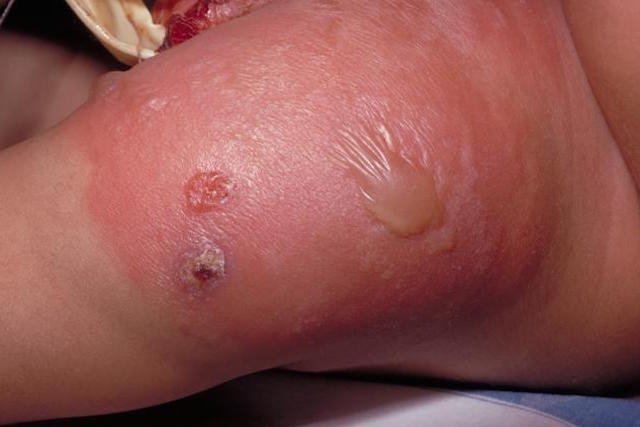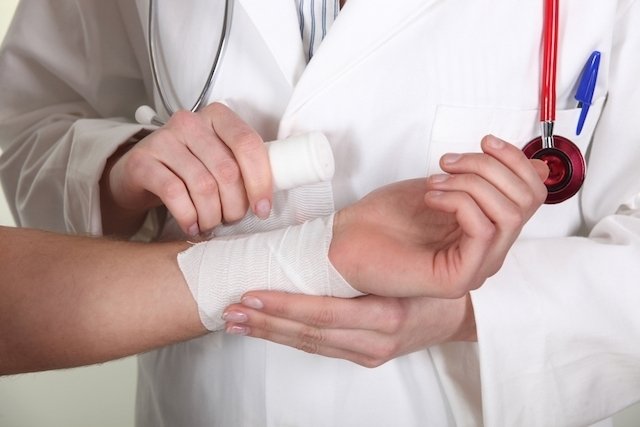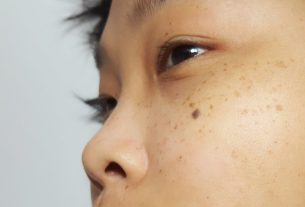Bullous erysipelas is a more serious type of erysipelas, usually caused by an infection with the bacteria Group A Beta-hemolytic Streptococcuswhich penetrates the skin through wounds or lesions, resulting in symptoms such as large, red sores on the skin and blisters filled with clear or yellowish liquid.
This type of erysipelas affects deeper layers of the skin and can, in some cases, cause complications and affect the fatty layer or even the muscles and cause accumulation of pus, skin necrosis or reach the blood circulation, causing generalized infection. Understand what erysipelas is.
The treatment of bullous erysipelas must be started as soon as possible to avoid complications, and the dermatologist normally recommends antibiotics to combat the infection, creams to apply to the affected skin and improve symptoms, and in the most serious cases, hospitalization to receive medication at the hospital. vein.
Sensitive content
This image may contain content that is uncomfortable for some people.

Symptoms of bullous erysipelas
The main symptoms of bullous erysipelas are:
- Extensive, inflamed and painful skin wounds;
- Blisters on the skin with transparent, yellow or brownish liquid;
- Soreness in the groin, when the wound affects the legs or feet;
- Pain, redness and swelling of the affected skin;
- Increase in local temperature;
- Darkening of the affected region;
- Fever, in the most serious cases.
When the infection worsens, especially when the treatment is not carried out correctly, it is possible to reach deeper layers of the skin, such as subcutaneous tissue and may even cause destruction of the muscles, as happens in necrotizing fasciitis.
Furthermore, if the injuries are not treated quickly, it is possible for bacteria to reach the bloodstream, causing widespread infection, which can put life at risk.
Therefore, it is important to consult a dermatologist or general practitioner whenever symptoms of bullous erysipelas appear, so that the most appropriate treatment can be started immediately.
If you experience symptoms of erysipelas, make an appointment with a dermatologist in the nearest region:
Taking care of your health has never been easier!
Is bullous erysipelas contagious?
Bullous erysipelas is not contagious, as it appears when bacteria that already live on the skin and in the environment manage to penetrate the skin through a wound, an insect bite or chilblains on the feet, for example.
However, in some cases, when bullous erysipelas is not treated properly and the person has open wounds, the bacteria can be transmitted to other people through direct contact with the wound, the liquid contained in the blisters, or contaminated clothing or objects.
How to confirm the diagnosis
The diagnosis of bullous erysipelas is made by a dermatologist or general practitioner, through evaluation of symptoms, characteristics of the lesion and health history.
In addition, tests such as blood counts may be requested to monitor the severity of the infection, and imaging tests such as computed tomography or magnetic resonance imaging in the case of injuries that affect very deep layers, muscles or bones.
If the doctor suspects a generalized infection, he or she may request a blood culture, for example, in order to identify which bacteria is causing the infection, and thus recommend the best antibiotic.
Another test that the doctor may request is a culture test of the liquid contained in the blisters, to assess the presence of bacteria and what type they are.
Possible causes
Bullous erysipelas is caused by an infection with bacteria Streptococcus beta-hemolytic group A, also known as Streptcoccus pyogeneswhich penetrates the skin through small lesions or wounds, such as insect bites, scratches, bites or chilblains on the feet, for example.
Some factors may increase the risk of developing bullous erysipelas, such as:
- History of erysipelas or infectious cellulitis;
- Bedsores;
- Chronic venous ulcer;
- Obesity;
- Uncontrolled diabetes;
- Lymphatic obstruction or insufficiency;
- HIV virus infection;
- Venous insufficiency;
- Arteriovenous fistula;
- Autoimmune diseases.
Bullous erysipelas is more common in people with a weakened immune system or poor circulation, as in these cases the bacteria can proliferate more easily in the skin.
In some cases, a secondary skin infection with bacteria, such as Staphylococcus aureus, Proteus is wonderful, Pseudomonas aeruginosa or Enterococcus faecalisfor example.
How the treatment is carried out
Bullous erysipelas is treated with antibiotics prescribed by a dermatologist or general practitioner, and the first choice is generally benzathine penicillin, or cephalosporins. People allergic to penicillin must be evaluated individually.
Furthermore, during treatment some measures are important, such as resting, applying cold compresses to the area, keeping the body hydrated and elevating the legs to reduce swelling.
In the case of recurrent erysipelas, the doctor may recommend treatment with benzathine penicillin G every 21 days, as a way of preventing new cases of the disease. See more about the forms of treatment with antibiotics, ointments and when it is necessary to be admitted to the hospital.
Furthermore, during the treatment of erysipelas, it is recommended that the nurse perform dressings, with correct cleaning of the lesion, removal of secretions and dead tissues, in addition to the use of ointments that help in the healing process, such as hydrocolloid, hydrogel, papain or collagenase, depending on the characteristics of each person’s injury. Check out how to make a wound dressing.
Possible complications
Bullous erysipelas is a more serious type of erysipelas, which can cause some complications, such as skin abscess, bone or joint infections, gangrene, generalized infection or heart valve infections.
Therefore, the treatment of bullous erysipelas should be started as soon as possible, with guidance from a dermatologist or general practitioner, and thus avoid complications that can put life at risk.

Sign up for our newsletter and stay up to date with exclusive news
that can transform your routine!
Warning: Undefined array key "title" in /home/storelat/public_html/wp-content/plugins/link-whisper-premium/templates/frontend/related-posts.php on line 12
Warning: Undefined array key "title_tag" in /home/storelat/public_html/wp-content/plugins/link-whisper-premium/templates/frontend/related-posts.php on line 13




